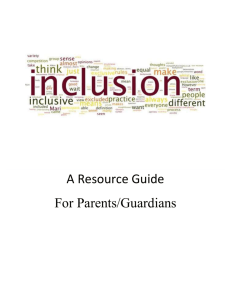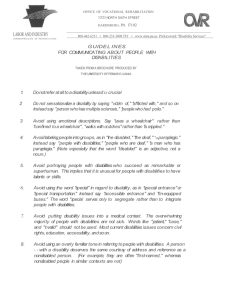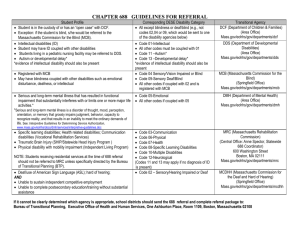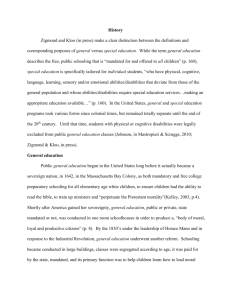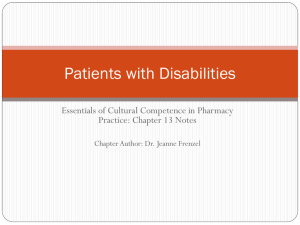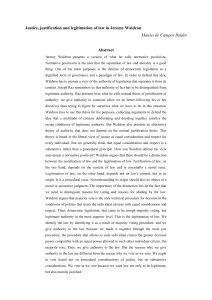Individualized
advertisement
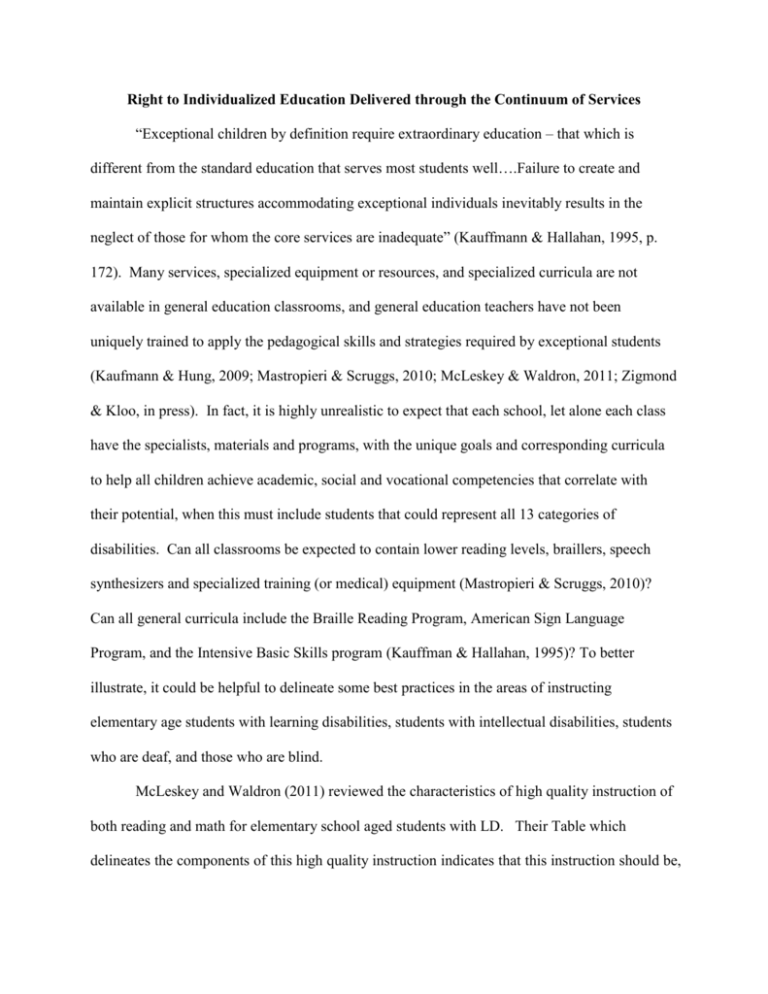
Right to Individualized Education Delivered through the Continuum of Services “Exceptional children by definition require extraordinary education – that which is different from the standard education that serves most students well….Failure to create and maintain explicit structures accommodating exceptional individuals inevitably results in the neglect of those for whom the core services are inadequate” (Kauffmann & Hallahan, 1995, p. 172). Many services, specialized equipment or resources, and specialized curricula are not available in general education classrooms, and general education teachers have not been uniquely trained to apply the pedagogical skills and strategies required by exceptional students (Kaufmann & Hung, 2009; Mastropieri & Scruggs, 2010; McLeskey & Waldron, 2011; Zigmond & Kloo, in press). In fact, it is highly unrealistic to expect that each school, let alone each class have the specialists, materials and programs, with the unique goals and corresponding curricula to help all children achieve academic, social and vocational competencies that correlate with their potential, when this must include students that could represent all 13 categories of disabilities. Can all classrooms be expected to contain lower reading levels, braillers, speech synthesizers and specialized training (or medical) equipment (Mastropieri & Scruggs, 2010)? Can all general curricula include the Braille Reading Program, American Sign Language Program, and the Intensive Basic Skills program (Kauffman & Hallahan, 1995)? To better illustrate, it could be helpful to delineate some best practices in the areas of instructing elementary age students with learning disabilities, students with intellectual disabilities, students who are deaf, and those who are blind. McLeskey and Waldron (2011) reviewed the characteristics of high quality instruction of both reading and math for elementary school aged students with LD. Their Table which delineates the components of this high quality instruction indicates that this instruction should be, “intensive, explicit, should be delivered to small groups, and should be closely monitored” (p. 50). Such specialized instruction has been shown to result in the ability of 40-50 per cent of this population of students to catch up with their peers (McLeskey & Waldron, 2011). They cite research that indicates this type of instruction is not being delivered by general education teachers (Zigmond & Baker, 1995; McLeskey & Waldron, 2002), nor by special educator coteachers (Murawski, 2006; Murawski & Swanson, 2001; Scruggs, Mastropieri, & McDuffie, 2007; Volonino & Zigmond, 2007). In addition, research is cited that shows that even special educators in resource rooms were found to be unable to provide the instruction that they had specialized in because they were overwhelmed with large class sizes of heterogeneous students from across several grade levels (Moody et al., 2000; Vaughn et al., 2001). McLesky & Waldron therefore recommend a change in current delivery service options for elementary students with LD which is comprised of a continuum of supports adapted from Alberta Education (2010). Universal and Targeted Supports would most often be provided in a general education classroom by a classroom teacher, while Specialized Supports would most often be provided by a special education teacher in a separate setting. Futhermore…a systematic progress monitoring system should be used to determine the effectiveness of supports and ensure that these activities add value to the education of students with LD. (p. 55) Similar to students with LD, students with Intellectual Disabilities (ID) require direct, systematic instruction in math, reading and daily living skills which can best delivered by special educators trained to use interventions for processing cognitive deficits (Kauffman & Hung, 2009). A special educator knows how to vary the pace, intensity, duration, reinforcement, and structure of instruction, when to alter teacher-student ratio, how to provide curriculum appropriate for functioning level or needed skills, and how to tailor fitting and precise monitoring of skill acquisitions. For both reading and math, Kauffman and Hung, (2009) indicate that though some students with milder forms of intellectual disability might be able to learn in the general classroom environment with appropriate modulation of instruction and consultation/collaboration with a special educator, others need to be taught these skills in a separate environment; whether that be a separate class or school. The feasibility of teaching of daily living skills was found to be more problematic when taught in the general education classroom, because the other students had already mastered those skills. Kauffman and Hung, therefore, also recommend that the continuum of services must be available for students with intellectual disabilities. “Special education for children with intellectual disabilities should occur in the general education classroom whenever possible, but the first concern of special education should be improving children’s learning, not the place or with whom they learn” (p. 455). As was stated at the beginning of this chapter, education for blind and deaf students began in the early 19th century in residential institutions. It was within these residences that the special instructional tools and strategies needed for these students to overcome their physical limitations in order to receive an education which would allow them to reach their potential and live full lives were perfected. Speaking about educating blind students, Bina (1995) indicates that, “without [the] solid foundation like Braille and mobility skills, positive integration into schools now or later in life becomes extremely difficult”(p. 272). He likens two hours of Braille instruction per week or per month to attempting to teach a student to swim by throwing them in the deep end without the prerequisite skills. Instead of being educated to thrive, blind students without sufficient specialized instruction will end up just barely surviving. Similarly, deaf students who do not grow up learning American Sign Language taught by parents who are also deaf, and who are mainstreamed into general education classrooms with only the aid of an interpreter, not only struggle academically, but lose out on the ability to communicate with other human beings (Lane, 1995). Moreover, both Bina and Lane counteract the popular notion that being educated separately is stigmatizing and prevents integration into society. Instead they assert that inclusion in general education classes which provide no contact or camaraderie with others like themselves, can itself be debilitating and isolating. “How can we ever learn to cope as deaf people, without the shared experience of other deaf people all around us” (Lane, 1995, p. 279)? “I feel that blind children shouldn’t avoid contact with other blind children and that such contact is clearly beneficial” (Bina, 1995, p. 271). The continuum of services can provide the individualized, special instruction that students with disabilities need academically, socially, and practically in order to maximize their unique potential. It is their civil right to receive an appropriately different education. “There needs to be a balance between focusing on changing the person with a disability to be more ‘normal,’ by attending regular schools and classes and being included in the standard curriculum, versus changing society to accept people who have disabilities” (Kauffman & Hallahan, 1995, pp. 166-167.

